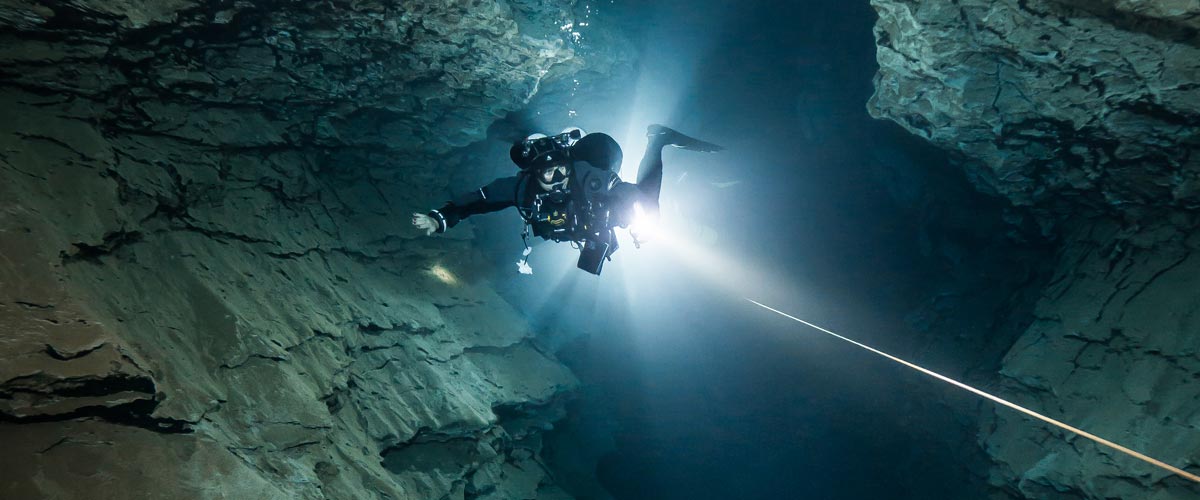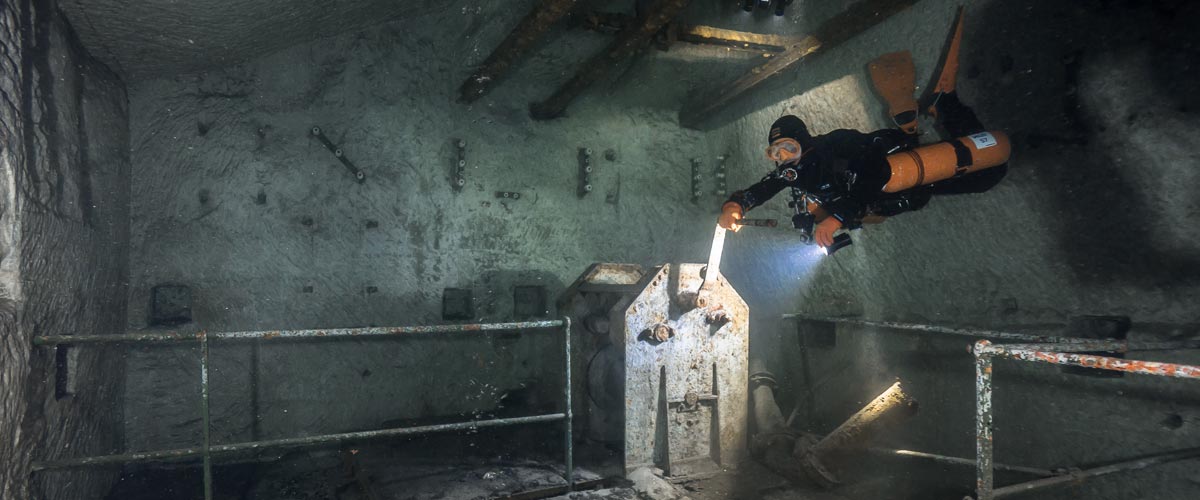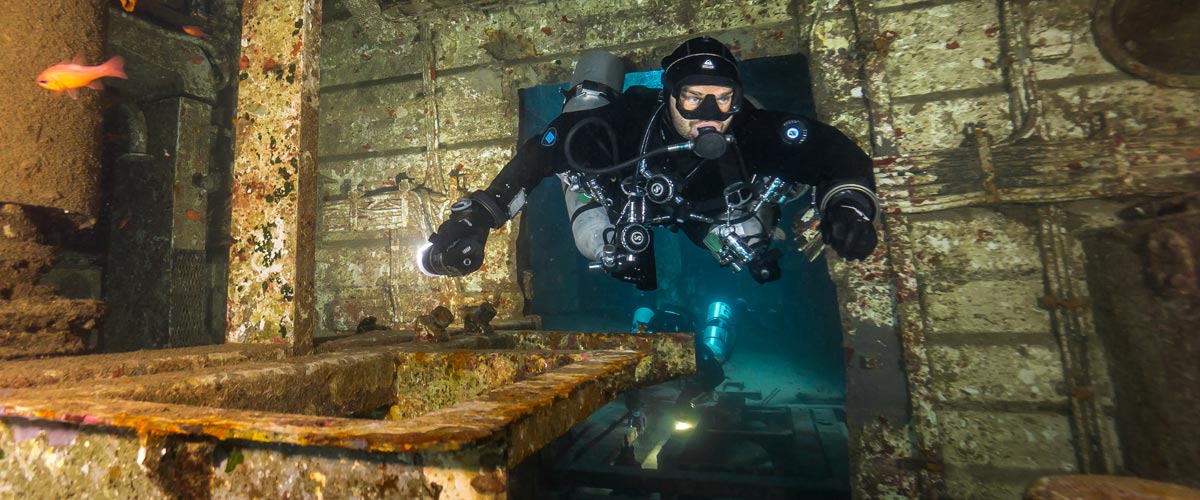Dive Training Blogs
Deptherapy returns to its Roots – Part 3
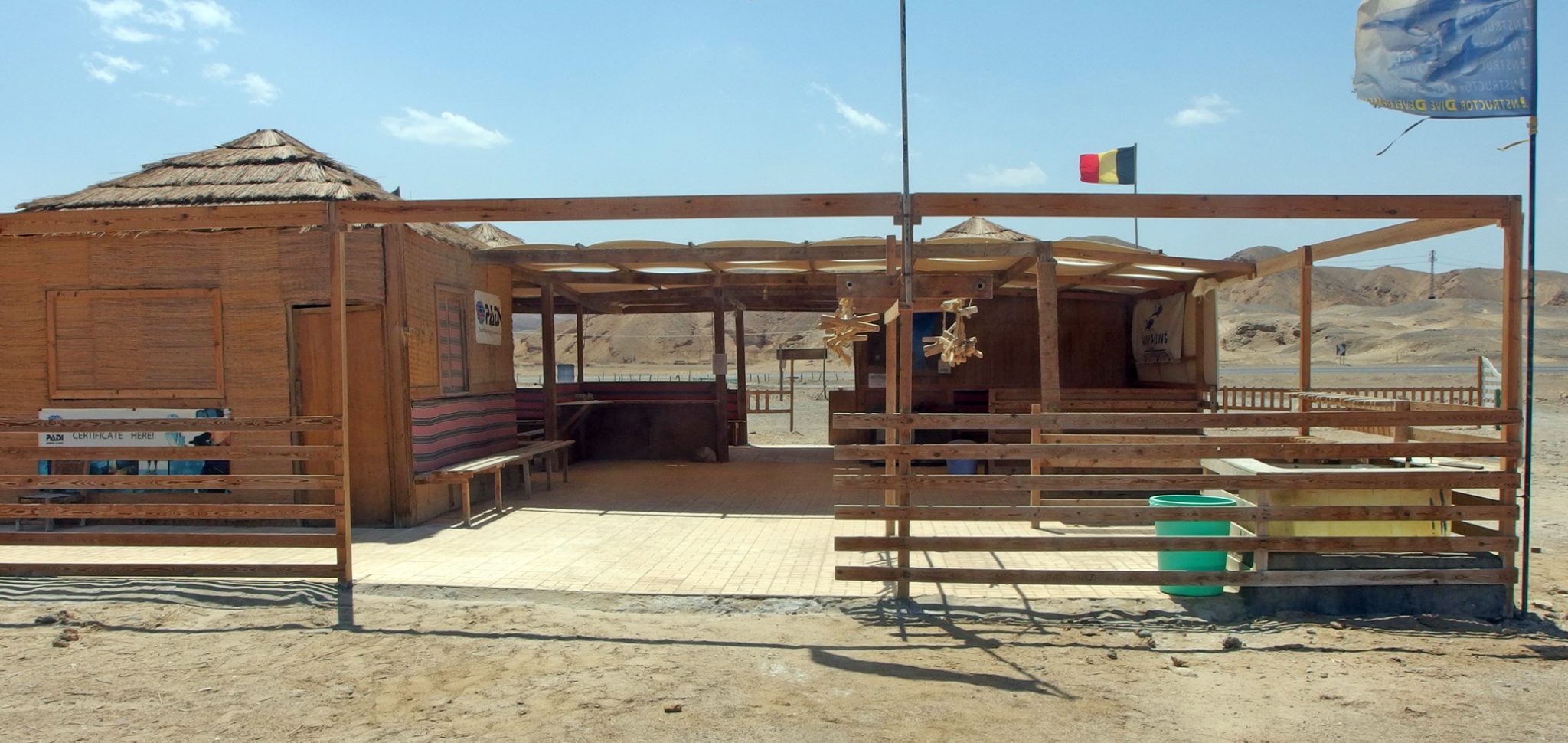
Join Richard Cullen from Deptherapy as we publish part 3 in his Blog about the charity’s recent expedition to Roots Red Sea, El Quseir, Egypt.
Today was planned to be our first day of open water diving in the Red Sea on the Roots’ House Reef. The Dive Centre and the House Reef are literally a 5-minute walk from the camp. If some beneficiaries are unable to make the walk then transport is provided.
All your kit, weights, cylinders etc are laid out ready for you to assemble your kit.
For those who use wheelchairs there is a paving stone pathway from the dive centre to the entry point for the reef. This, as with the provision of four fully accessible rooms in the resort, was built by Steve Rattle and his team to meet Deptherapy’s needs and to make the resort and reef accessible to all divers with disabilities.
A point here: in many Adaptive Teaching/Disabled Diving Manuals it is suggested that dive centres might wish to purchase a beach wheelchair. To justify the cost, you would need a considerable number of disabled clients who were unable to walk to the ocean entry point as they cost circa £3000. Using an individual’s wheelchair across sandy beaches is difficult and not a good idea. Many wheelchairs, such as Corey’s, cost thousands of pounds and getting sand/grit in the bearings can result in costly repairs. So, at Roots the staff have adapted and overcome the challenge, with the beach wheelbarrow. A foam pad is placed in the bottom and a towel draped over it. It is effective and allows divers like Corey to be taken to the beach, the wheelbarrow is pushed into shallow water and the diver either gets out of the transport himself or is lifted out by the Roots team. Everyone finds it a lot of fun!
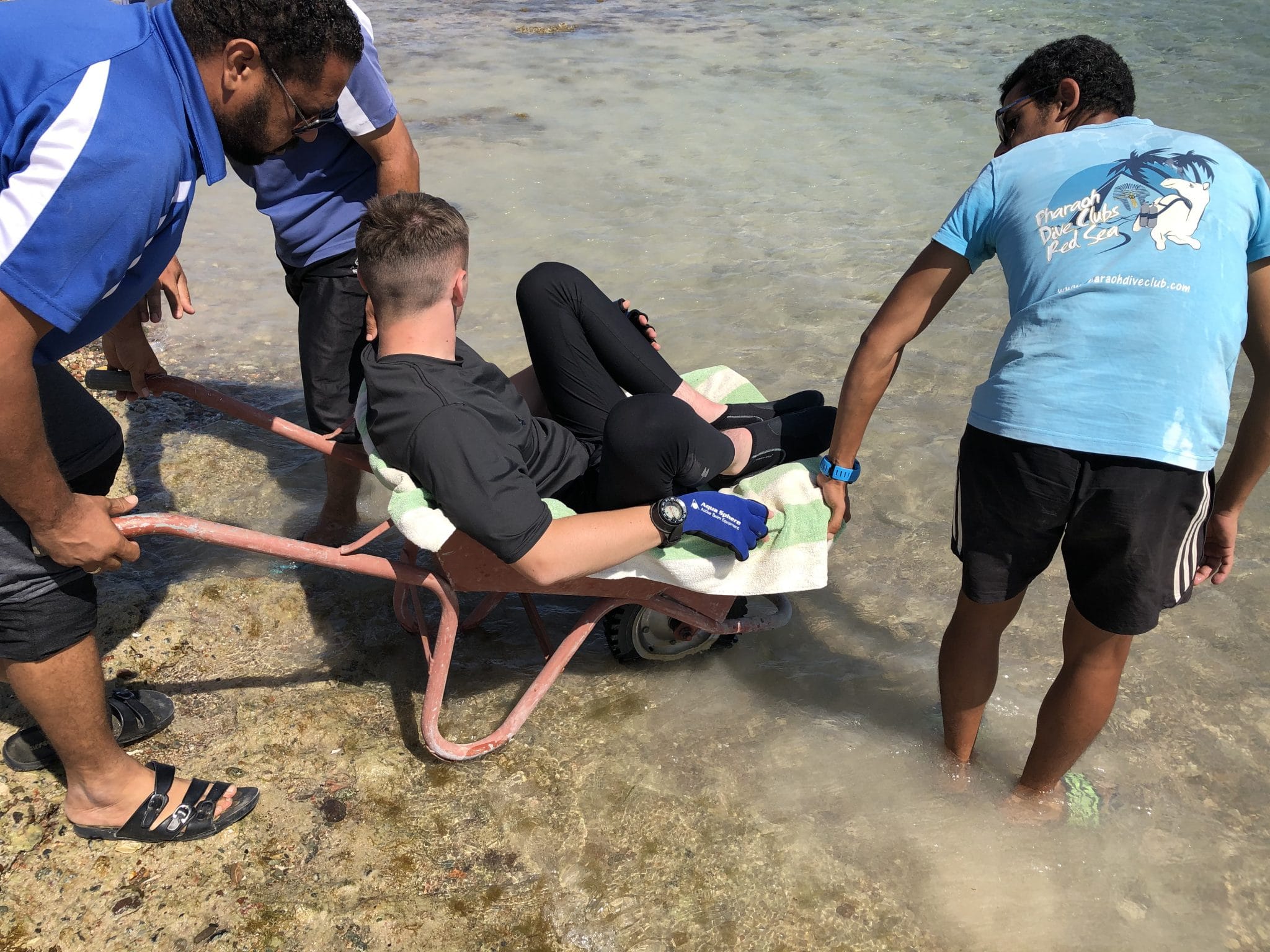
Your transport awaits!
Working with those with life-changing mental and/or physical challenges does require careful risk management, not just in the general risk models for groups of divers but individual risk assessments.
On the Deptherapy Education Professionals’ Course and adopted in all our programmes is the ‘Three Tick Model’. Before taking an individual diving, each of the following must be ticked off:
- Doctor certifies student fit to dive
- Student signs assumption of Liability and Risks
- Instructor is happy given the medical information to instruct the student.
As an Instructor, or as a dive centre owner you may wish to check that your insurance covers you for working with those with severe disabilities.
The instructor will meet with the student and complete a personalised risk assessment and will review whether there have been any changes in the student’s physical or mental health since their consultation with their doctor (in our case an AMED or Dive Referee). They will also check that the medication or its daily dosage has not changed.
In terms of those with severe challenges, an AMED or a Dive Referee may require full disclosure of medical records before making a decision. For Deptherapy we also reserve the right to refer a final decision to our two medical advisors, Dr Mark Downs or Dr Oli Firth, both of whom have considerable experience in dive medicine.
At the end of Day 1 the team were happy for Keiron to move forward; he is a strong, fit man and a capable diver who gives 100%. Corey is an amazing guy and was very quickly embraced as a member of the Deptherapy ‘family’. But sometimes there has to be tough love and in Deptherapy we are always very open with our beneficiaries. Some reach a level of certification beyond which they cannot progress. For Corey there was a serious discussion with the teaching team. He had completed his skills in the pool and met the standard required BUT none of us, especially me, had any confidence that he was the standard to be an Open Water Diver. A hard message to give to a young man who already had a certification card that said he was an Open Water Diver. He had either not been taught properly and certified without having met the required standards or he had forgotten all he had learned. My view is he is a bright young man and that the former reason must be correct.
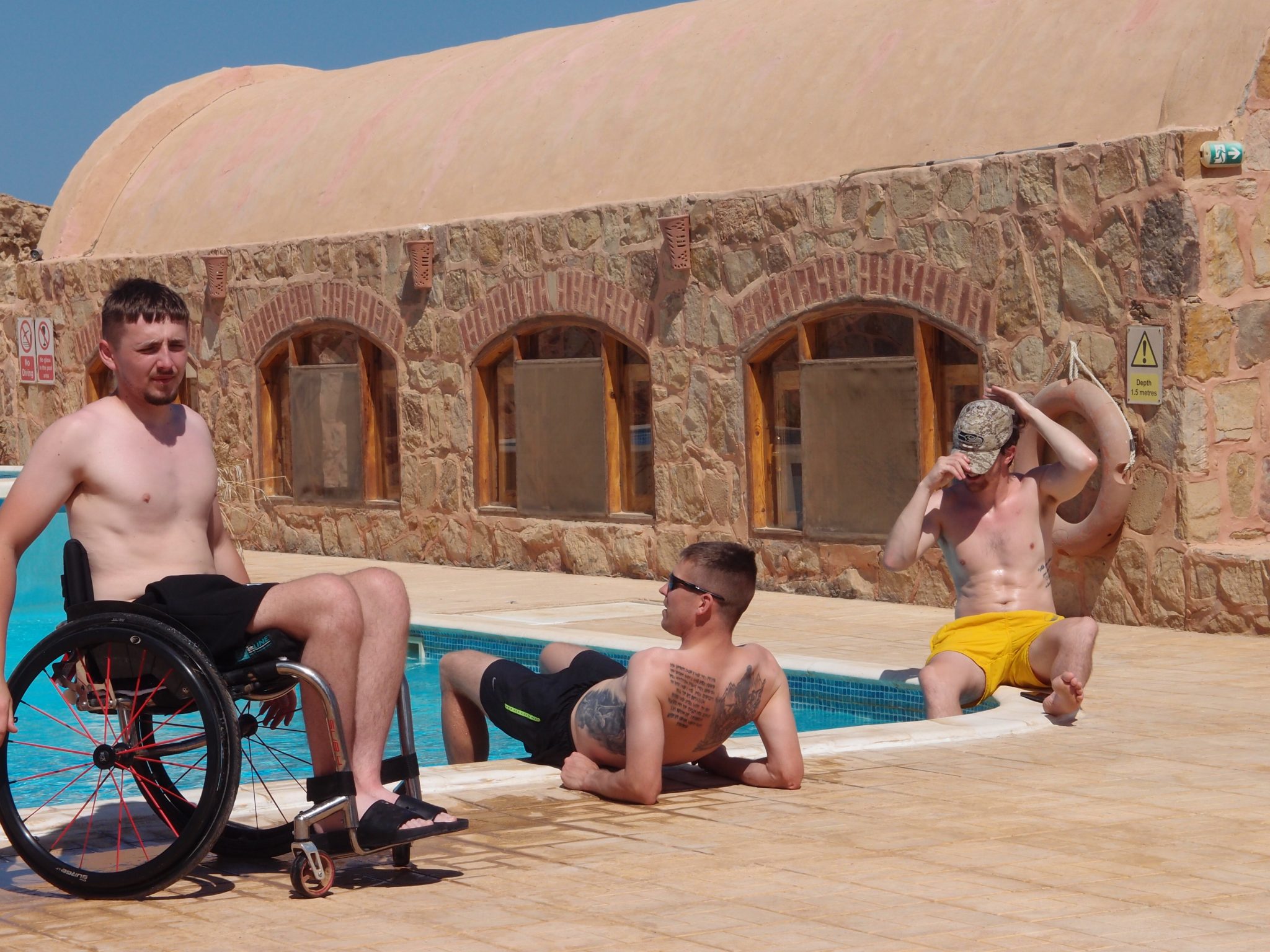
Corey, Keiron and Swars between confined dives by the Roots pool
The RAID definition of mastery:
‘When a student/learner can comfortably demonstrate proficiency and competence, when completing an entire motor skill including all the components of the skill in a manner that demonstrates minimal stress or hesitation.’
Each mainstream diving training agency defines mastery in similar terms. It was not Corey’s ability to do the skills, it was his ability to ‘dive’ that concerned us.
If weather conditions are right, the Roots House Reef meets the requirements for a ‘confined environment’ and on Day 3 it did.
Entry to the reef is through a channel and it goes from extremely shallow to 3-5 metres. There is a rope that allows a diver to control their descent and for use at the end of a dive if the current is running.
Most instructors will have seen nervous divers who say they have ear issues, not at a depth when there is any noticeable change in pressure, and those who continually fidget with their masks and other kit in an attempt to avoid descent. Corey displayed these traits.
We made the decision to move to the open water as it would give Corey more of an opportunity to get himself in a horizontal position rather than the upright position we saw in the pool. We struggled to get him down the line and into the sea. Eventually after much hard work we got there. He maintained the upright position and was using tiny arm and hand movements to propel himself forward. His buoyancy was poor. We decided to end this session and return to the pool.
A note here on trim and posture in the water for both amputees and those with paraplegia. When working with a leg amputee, especially a bilateral amputee, their balance at the surface is often poor, they tip forward, backwards and from side to side. This is often to do with weighting but also the fact that they do not have legs to weigh them down or to balance them. They also are often unaware of where their stumps (the term for the part of the limb remaining) are, and their stumps come up at right angles to their body. We have exercises to make amputees aware of this.
Those with paraplegia adopt a different stance, often they are upright in the water and their legs trail down, even when in trim their legs hang below the rest of their body. The team needs to ensure that the diver is properly weighted and that the horizontal position in the water in reinforced. Spatial awareness also needs to be created in the diver so that their legs and feet do not drag along the bottom or come into contact with coral. They need to become aware of where their legs and feet are in the water.
This was very hard for Corey and I was quite honest that he needed to improve considerably and learn to dive properly before I would allow him to move forward. He was gutted but up for the challenge, and what we saw over the next few days was a man committed to succeed!
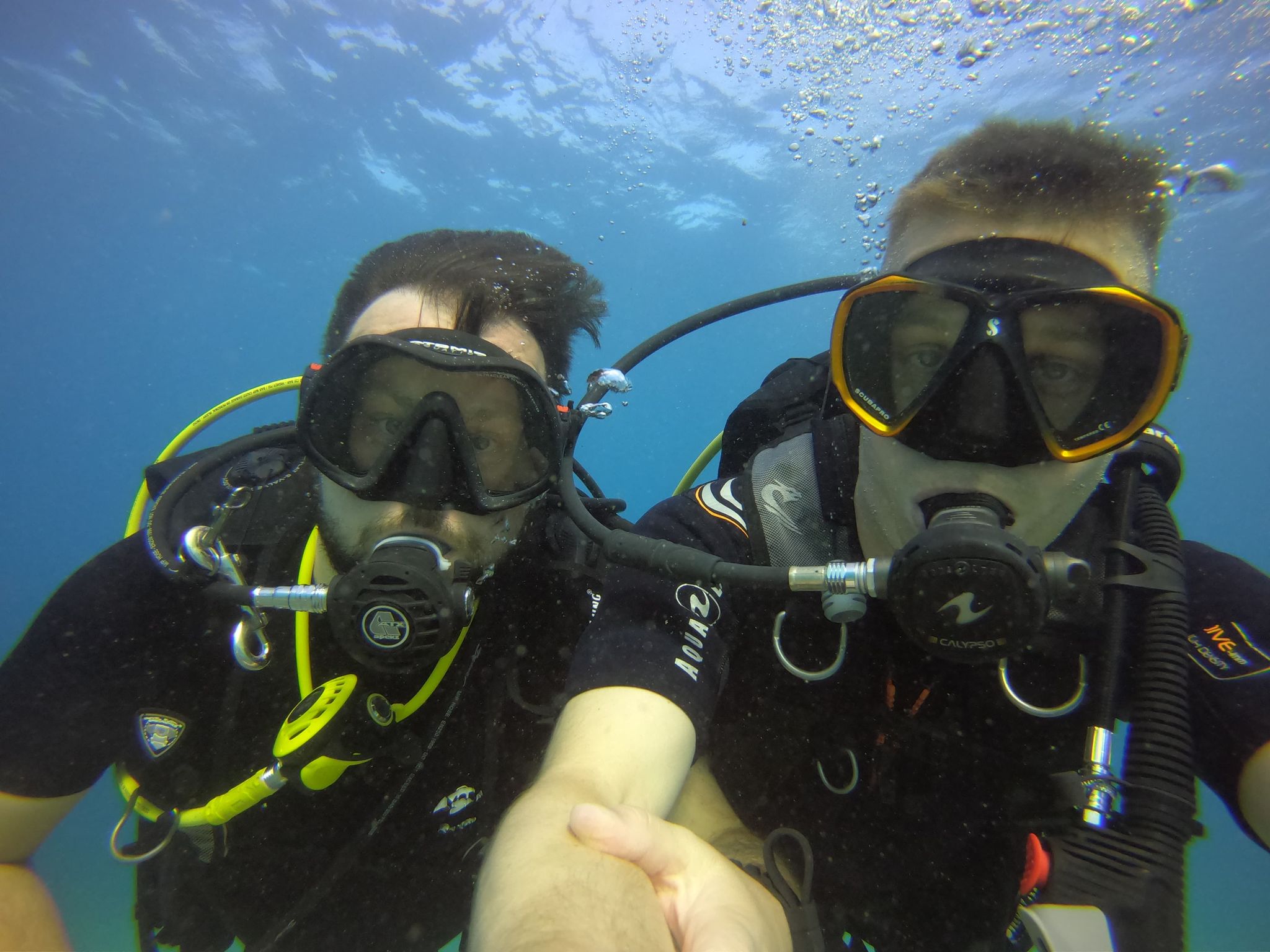
Michael and Keiron
So back to the pool with Oatsie and Michael. We went through all the skills for RAID OW20 twice and focussed on buoyancy, performing the skills neutrally buoyant, getting Corey in trim and teaching him how to swim underwater without the use of his legs. It is a pity that Chris Middleton, one of our divemasters and a bilateral amputee had to miss the expedition because of wisdom tooth surgery. Chris is a role model of how to swim underwater without the use of your legs.
Although I, all our Instructors and our DMs/TDMs can demonstrate how to swim underwater, not using your legs and using a modified free diving stroke, it is far better for someone with no legs or no use of their legs to demonstrate the skill.
By the end of the day Corey had progressed substantially and the Red Sea awaited him on Day 4.
Keiron had progressed well with his instructor Moudi and Swars and was getting added value with extra work on advanced buoyancy and SMB and DSMB deployment.
Tomorrow I will talk a little more about our TDMs; we expect very high standards from them. Michael and the two Toms have over 100 dives each. Michael dived with us in Chuuk Lagoon and both Toms have been on Red Sea liveaboards. We look for them to go beyond DM level and to progress to Instructor level. Swars had delayed the start of his DM programme, initially because of work and then COVID. He impressed, and here again, veterans have some advantages as they are used to briefings and therefore when you give them a model for a briefing they can quickly pull a high quality briefing together.
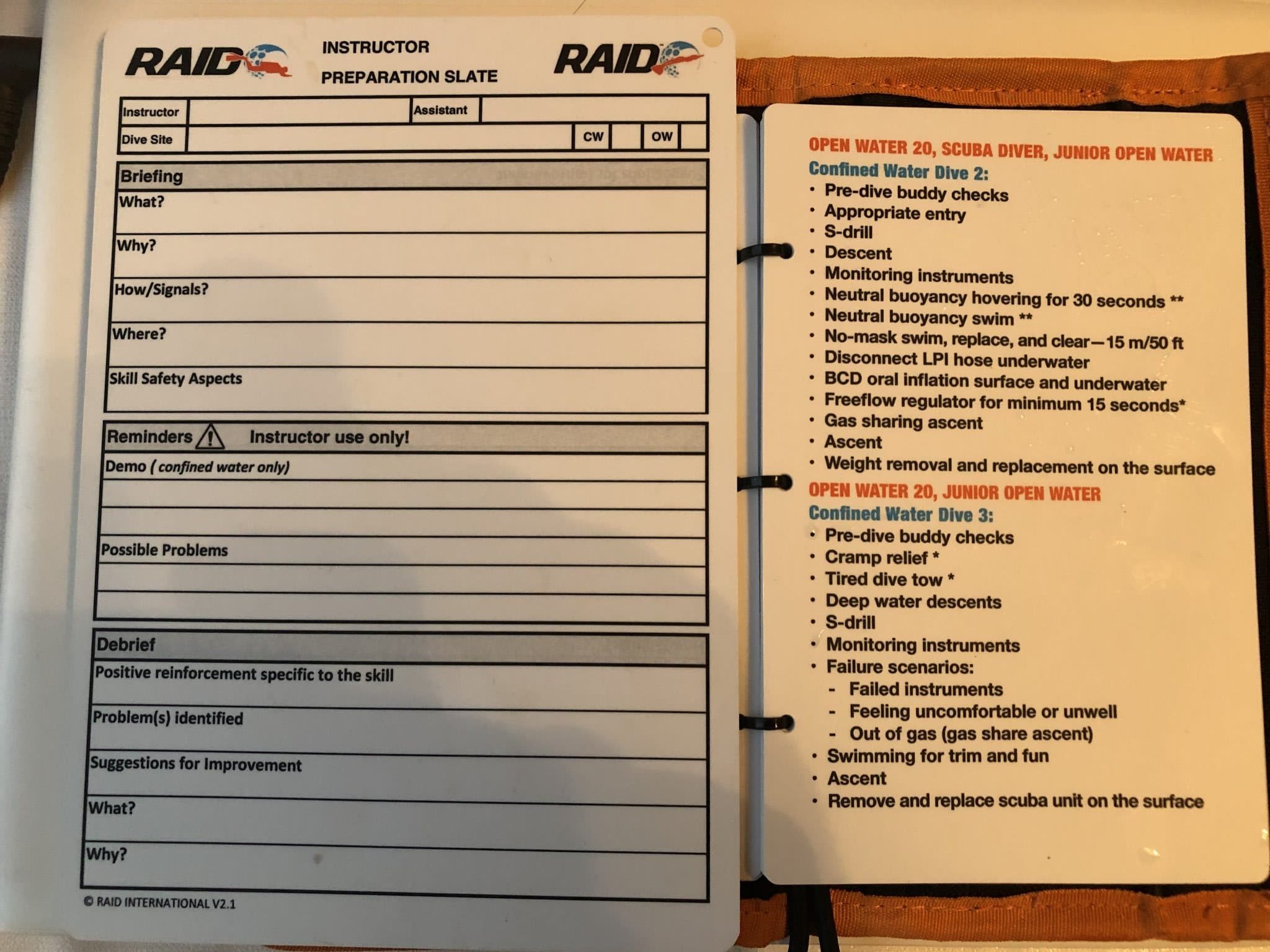
RAID Skill Briefing Checklist and OW20 slates
Throughout the week I found the RAID skills briefing slate excellent for the TDMs and the plastic skills slates are a great aide memoire for the whole team.
Find out more about the work of Deptherapy and Deptherapy Education at www.deptherapy.co.uk
Blogs
Intro to Tech: What is it about?
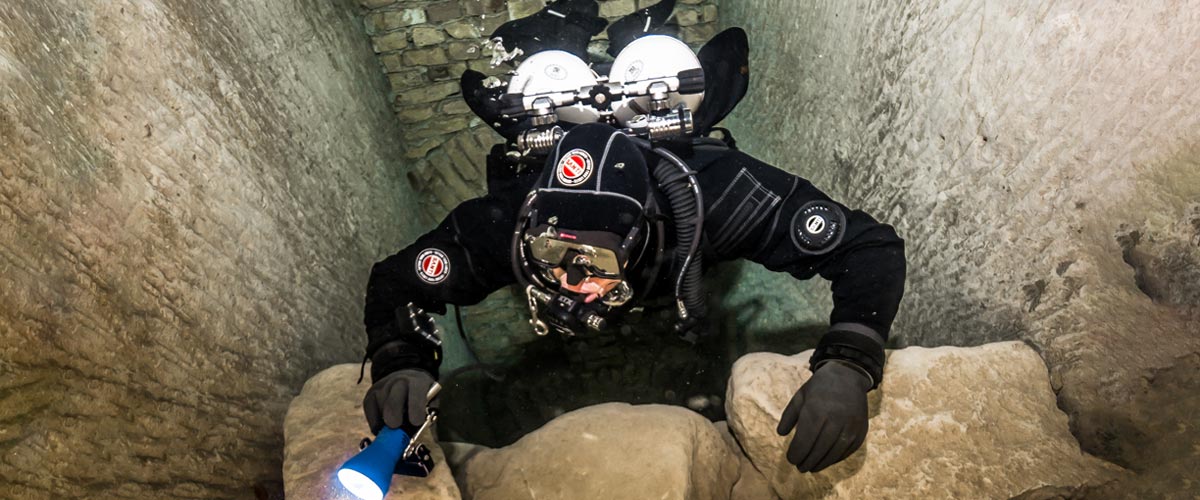
Article by José Pablo Mir
Pictures by Cezary Abramowski
The world of technical diving is exciting. It opens the door to new sites, depths, and bottom times. More importantly, it opens our minds to a new way of planning, facing, and experiencing dives, even those not purely technical.
Becoming a technical diver is a process, and like in other aspects of life, we should find the proper entry point that suits us best based on our knowledge and experience. The Introduction to Technical Diving course from TDI -the world’s largest and most recognized technical diving teaching organization- is the best option for divers who have yet to gain experience in the fundamental aspects of this new practice. The course’s content and its embrace of new techniques and technologies make it possible to acquire a solid foundation to learn and gain experience in this practice properly.
Becoming a technical diver is not something that happens overnight, whether deciding to become one or receiving a certification card stating we are now technical divers. It is a slow process extending farther away than any introductory course. It requires effort and dedication. But it will bring us satisfaction from day one -or two.
It is a matter of mentality
First, we must understand and accept that technical diving, involving greater depths, longer bottom times, exotic gases, virtual or real ceilings, and more, comes with higher levels of risk than the sport diving we have been practicing until now.
Although this discussion usually starts with a warning about risks, as I’ve done in the previous sentence, our practice is not a game of chance.
Technical diving is a rational activity that requires maturity and good judgment, and we will put everything into ensuring that each dive is a successful one -meaning we return from it safe and sound. With this understanding, we will strive to establish a mental attitude more aligned with our practice and its realities.
This new “technical diver” mindset we will develop will lead us to be more cautious in our executions, more analytical in our plans, more rational in our strategies, and more detailed in our procedures.
Experience will keep teaching us to know ourselves better, to keep our anxiety and other emotions under control, and to manage our impulses. Over time, our senses will sharpen, and we will be more attentive to the particulars of the situation we find ourselves in.
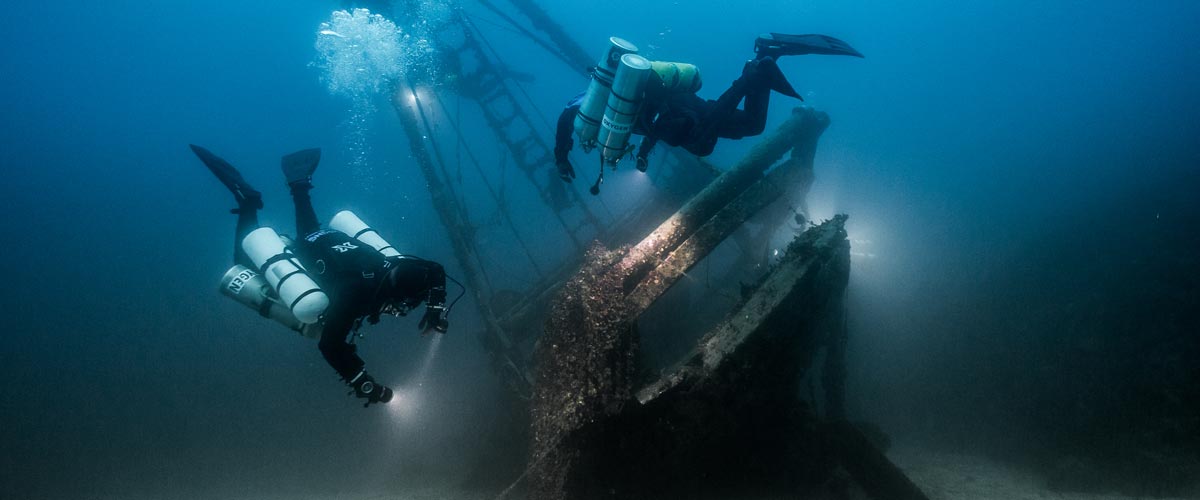
Strategies and procedures
Our strategies, those broad guiding lines tracing the path to follow, from how to approach planning to where, with what, and how we are willing to get there, will be more specific and more practical. Not because they magically become so, but because we will consciously and deliberately frame them that way.
We will establish clear, concise, and realistic procedures. Not only for the undesirable situations that may present themselves but also for those that are part of our dive objectives.
Even though, as technical divers, we often use equipment different from what we were previously accustomed to, it is essential to note that the gear does not make the diver. In a way, we could consider such equipment as the necessary tools to implement what our goal seeks to achieve, according to our strategies and procedures.
Technique plays an important role
We must put our greatest effort into learning and perfecting the different techniques we will be acquiring. Buoyancy, trim, propulsion, cylinder handling, deploying DSMBs and lift bags, valve drills, and more are essential skills we must begin to master to progress in our art. What we cannot do, when we need to do it, can harm us.
Our techniques must be effective and achieve the purpose for which they were devised. But they must also be efficient and require the least resources possible, including the time they take and the effort they demand. Effectiveness and efficiency will prevail over beauty and other considerations that may come to mind, although none of them should be mutually exclusive. A technique executed efficiently and effectively tends to have an inherent beauty.
Refining techniques is a lifelong mission. Some of them will be easy to master from the go; others, on the other hand, will be our life mission and will require many repetitions just to resemble the idea we have in mind of how they should be executed.
We must consider the environment
Our learning, the needs and musts of the practice we engage in, the experience we gradually gain, our strategies and procedures, and even our equipment and tools change with the environment.
Diving in the ocean, everything about us must be suitable for ocean dives. Conditions there rarely emulate those found in a pool, lake, or river. Variable winds and currents, greater depths, visibility conditions, other divers with uncertain skills around us, marine life, maritime traffic, distance from the coast, and many other factors add complexity and uncertainty.
It is never necessary to master the pool on the first day, but planning and aspiring to gradually cope with the ocean’s conditions is essential.
The cost of good training
We are aware that our resources are often scarce in relation to the possibilities of use we could give them if they were not. To a greater or lesser extent, we are part of the economic reality in which we are embedded.
Fortunately, the cost of good technical diver training is not an entry barrier. Comparing training and equipment costs, we see that the former are generally lower. Yes, lower cost for personalized service, essential to our future
performance and safety, than for a series of mass-produced products that are mere, albeit necessary, tools for an end.
The value of good training
The value of the training we received encompasses a range of characteristics, from emotional and methodological to technical and technological. TDI and its Introduction to Technical Diving course offer a deep and modern approach, with a teaching strategy that aims to create thinking divers, not merely obedient ones.
As technical divers, our knowledge is our primary tool. In this type of activity, what we don’t know can harm us.
Is this course optional?
Unfortunately, the fact that this Introduction to Technical Diving course is not a prerequisite for any subsequent training is an invitation to consider it optional. And we all know what usually happens to “optional” under budget constraints.
However, this course should be seen as optional only by those divers who are somehow familiar with the use of technical equipment, who have a mindset more in line with the requirements of this type of diving, who plan and execute the dives the proper “technical” way, who know their gas consumption rate, who are not intimidated by non-decompression tables, who feel comfortable using their dive computers, and know the techniques and have at least an acceptable level of buoyancy, positioning, and propulsion. Those can go straight to a more advanced training course, such as TDI’s Advanced Nitrox.
We must ask ourselves whether or not we are in that group.
Remember our goal: to have fun
Recreational diving is our passion. Jumping into the water carrying heavy equipment and having properly dotted our I’s and crossed our T’s have only one ultimate goal: fun. This is the activity we have chosen as a hobby. We must enjoy it; it must give us pleasure and make us vibrate.
Having a good time is not optional!
Blogs
Four opportunities to go pro in 2024 with Dive Friends Bonaire
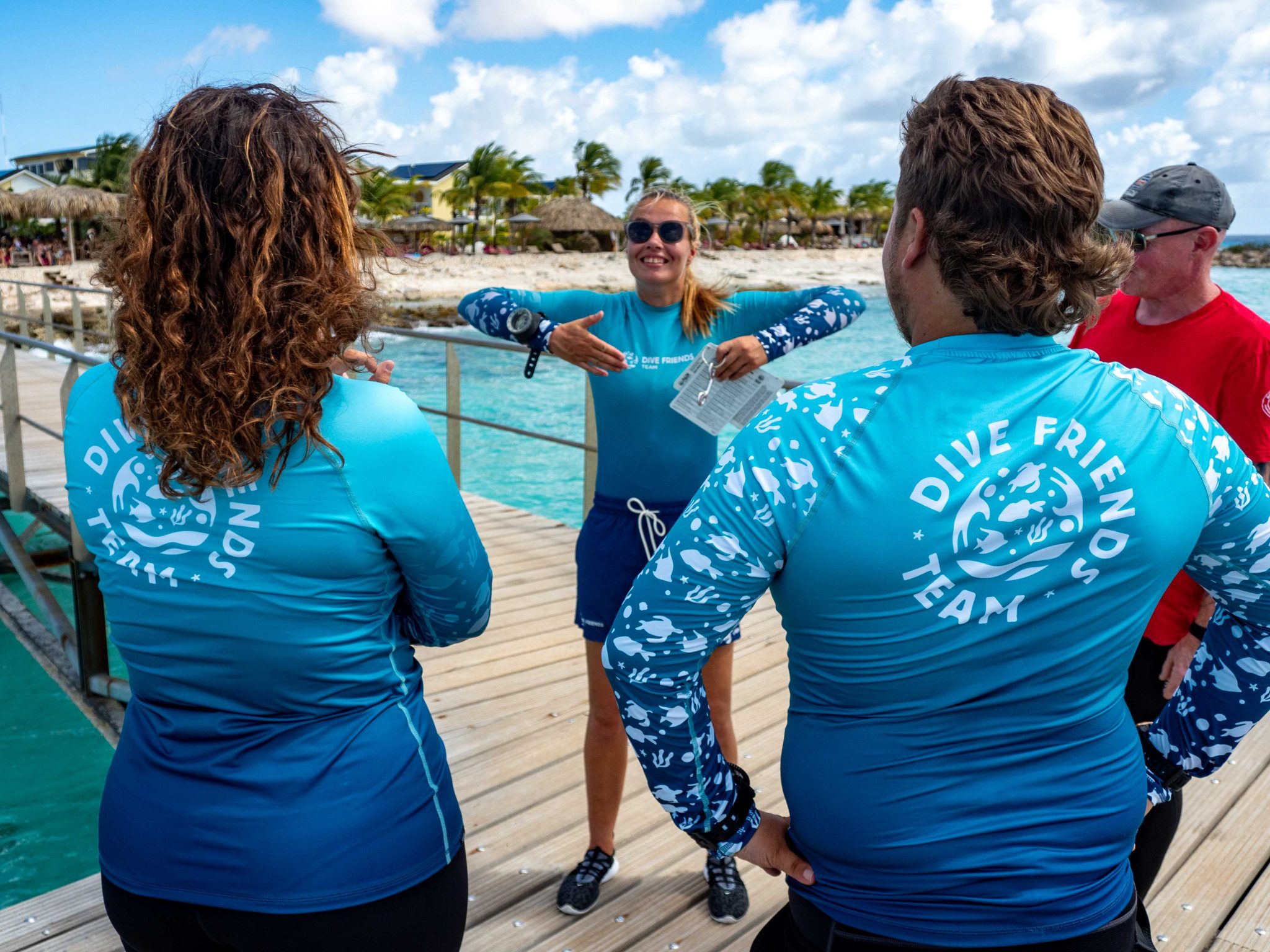
Dive Friends teaches the Instructor Development Course (IDC) several times a year to students who are eager to share their passion for diving with the world.
Dive Friends is known for the personal approach throughout the course. Their in-house course director will lead the students through every essential step, mentoring them to achieve their fullest potential as a dive instructor.
Applications for the following IDC start dates are now open:
- 12 April
- 5 July,
- 20 September
- 29 November
Partnership with Casita Palma
If the student opts for the IDC-Deluxe or IDC-Supreme package, their accommodation will be arranged for them at Casita Palma. This small and quiet resort is within walking distance from Dive Friends Bonaire’s main dive shop location and has everything you need to relax after an intense day of IDC training. Breakfast is included, so the student will always be fuelled and ready for their day.
Contact Dive Friends Bonaire’s Course Director Eddy for more information: coursedirector@divefriendsbonaire.com.
-

 News3 months ago
News3 months agoHone your underwater photography skills with Alphamarine Photography at Red Sea Diving Safari in March
-

 News3 months ago
News3 months agoCapturing Critters in Lembeh Underwater Photography Workshop 2024: Event Roundup
-

 Marine Life & Conservation Blogs2 months ago
Marine Life & Conservation Blogs2 months agoCreature Feature: Swell Sharks
-

 Blogs2 months ago
Blogs2 months agoMurex Resorts: Passport to Paradise!
-

 Blogs2 months ago
Blogs2 months agoDiver Discovering Whale Skeletons Beneath Ice Judged World’s Best Underwater Photograph
-

 Gear Reviews3 months ago
Gear Reviews3 months agoGear Review: Oceanic+ Dive Housing for iPhone
-

 Marine Life & Conservation2 months ago
Marine Life & Conservation2 months agoSave the Manatee Club launches brand new webcams at Silver Springs State Park, Florida
-

 News3 months ago
News3 months agoWorld’s Best Underwater Photographers Unveil Breathtaking Images at World Shootout 2023















